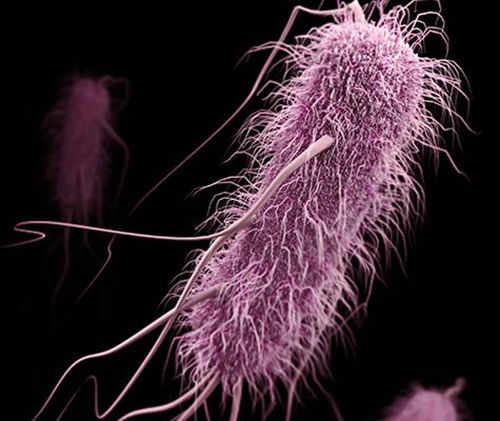Bacteria that are commonly associated with respiratory and urinary tract infections in hospital settings, stand at the edge of a precipice waiting to plunge into the antibiotic-resistance pool that awaits them below. New research from Washington University School of Medicine in St. Louis reveals that two genes conferring drug-resistance to a class of antibiotics considered to be the last line of defense can be easily shared among bacterial family members.
Drug-resistant germs from this family of bacteria, called Enterobacteriaceae, were recently found in several patients from two Los Angeles hospitals. The infections were traced back to medical scopes contaminated with bacteria resistant to carbapenems, a class of antibiotics that are used only in gravely ill patients or those infected by resistant bacterial strains.
“Carbapenems are one of our last resorts for treating bacterial infections, what we use when nothing else works,” explained Gautam Dantas, Ph.D., associate professor of pathology and immunology at Washington University School of Medicine and senior author on the study. “Given what we know now, I don't think it's overstating the case to say that for certain types of infections, we may be looking at the start of the post-antibiotic era, a time when most of the antibiotics we rely on to treat bacterial infections are no longer effective.”
The findings from this study were released recently in Emerging Infectious Diseases through an article entitled “KPC and NDM-1 Genes in Related Enterobacteriaceae Strains and Plasmids from Pakistan and the United States.”
Dr. Dantas and his team looked bacteria from the same family, which includes E. coli, Klebsiella pneumoniae and Enterobacter. While many of these strains don’t normally cause illness and are often essential for good health, patients with weakened immune systems are at grave risk from infections with carbapenem-resistant strains.
The investigators focused their attention on two previously identified resistance genes, KPC and NDM-1. KPC was first isolated in New York over a decade ago and quickly spread globally, with the exception of India, Pakistan, and a handful of other South Asian countries. Conversely, NDM-1 was isolated in 2006 in India and parts of South Asia, but nowhere else.
Dr. Dantas and his colleagues expected bacteria containing these two resistance genes to be genetically different and mutually exclusive due to their distinct geographical isolation. To their surprise they found an extremely high genetic similarity, which suggested that the antibiotic-resistance genes could be easily shared from the two geographically distinct regions.
Additionally, after sequencing the plasmid DNA from the bacteria harboring the resistance genes, they found several instances of plasmids carrying KPC and NDM-1 that were nearly identical. This implied that spread of antibiotic resistance could be easily facilitated between disease-causing bacteria from the U.S. and South Asia—a scenario already thought to be occurring in parts of China.
“Our findings also suggest it's going to get easier for strains of these bacteria that are not yet resistant to pick up a gene that lets them survive carbapenem treatment,” stated Dr. Dantas. “Typically, that's not going to be a problem for most of us, but as drug-resistant forms of Enterobacteriaceae become more widespread, the odds will increase that we'll pass one of these superbugs on to a friend with a weakened immune system who can really be hurt by them.”






